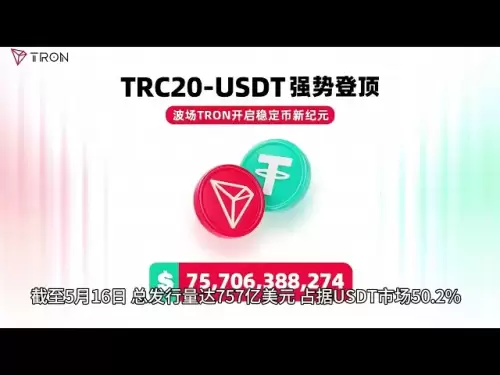-
 Bitcoin
Bitcoin $110,906.1424
3.04% -
 Ethereum
Ethereum $2,616.1311
0.63% -
 Tether USDt
Tether USDt $1.0000
-0.03% -
 XRP
XRP $2.4076
0.95% -
 BNB
BNB $681.7444
3.11% -
 Solana
Solana $176.0510
2.96% -
 USDC
USDC $0.9998
-0.02% -
 Dogecoin
Dogecoin $0.2386
2.67% -
 Cardano
Cardano $0.7867
3.46% -
 TRON
TRON $0.2715
0.19% -
 Sui
Sui $4.0381
3.61% -
 Chainlink
Chainlink $16.3121
1.66% -
 Hyperliquid
Hyperliquid $30.6214
15.05% -
 Avalanche
Avalanche $23.8312
4.41% -
 Stellar
Stellar $0.2972
2.25% -
 Shiba Inu
Shiba Inu $0.0...01503
1.38% -
 Hedera
Hedera $0.2012
1.83% -
 Bitcoin Cash
Bitcoin Cash $415.7993
4.13% -
 UNUS SED LEO
UNUS SED LEO $8.8659
0.58% -
 Toncoin
Toncoin $3.1172
1.03% -
 Polkadot
Polkadot $4.8202
1.18% -
 Litecoin
Litecoin $98.7641
3.12% -
 Monero
Monero $399.7785
9.96% -
 Bitget Token
Bitget Token $5.2930
1.76% -
 Pi
Pi $0.8229
-0.26% -
 Pepe
Pepe $0.0...01382
-1.17% -
 Dai
Dai $0.9998
0.00% -
 Ethena USDe
Ethena USDe $1.0005
-0.01% -
 Bittensor
Bittensor $464.5889
9.59% -
 Uniswap
Uniswap $6.3663
-0.24%
How to interpret VWAP's sudden rise and fall in the early trading? Is it a signal of inducing more?
Sudden VWAP rises in early crypto trading may signal strong buying, while falls indicate selling pressure, both potentially inducing more trading activity.
May 21, 2025 at 11:00 pm
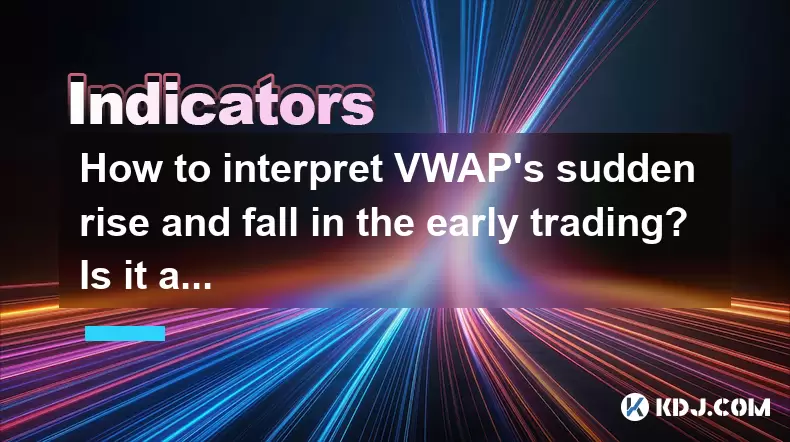
The Volume Weighted Average Price (VWAP) is a crucial indicator in the cryptocurrency trading world, often used to gauge the market's health and direction. When VWAP experiences a sudden rise or fall during early trading, it can signal various market dynamics and potential trading opportunities. This article will delve into how to interpret these sudden movements in VWAP and explore whether they could be signals of inducing more trading activity.
Understanding VWAP in Cryptocurrency Trading
VWAP is calculated by taking the total dollar amount traded for every transaction (price multiplied by the number of trades) and then dividing it by the total volume of trades for the period. In the context of cryptocurrency, VWAP serves as a benchmark to determine if a coin is trading at a fair value relative to the day's trading activity.
A sudden rise in VWAP during early trading hours indicates that the average price at which the cryptocurrency is being traded is increasing. Conversely, a sudden fall suggests a decrease in the average trading price. These movements can be influenced by various factors, including large trades, market sentiment, and news events.
Interpreting a Sudden Rise in VWAP
When VWAP suddenly rises in the early trading hours, it often signals strong buying pressure. This could mean that institutional investors or large traders are entering the market, pushing the price up. Traders might interpret this as a bullish signal, indicating potential for further price increases.
- Check for Large Trades: Look for significant buy orders that could be driving the VWAP up. Tools like trading volume indicators can help identify these large trades.
- Analyze Market Sentiment: Use sentiment analysis tools to gauge the general mood of the market. Positive news or developments related to the cryptocurrency could be fueling the rise in VWAP.
- Monitor Price Action: Observe how the price reacts to the rise in VWAP. If the price continues to trend upwards, it might confirm the bullish sentiment.
Interpreting a Sudden Fall in VWAP
A sudden fall in VWAP during early trading can indicate strong selling pressure. This might suggest that large holders are offloading their positions, which could lead to a bearish market sentiment.
- Identify Large Sell Orders: Use trading platforms to track any significant sell orders that might be causing the VWAP to drop.
- Assess Market Sentiment: Negative news or developments could be driving the fall in VWAP. Monitor news outlets and social media to understand the underlying causes.
- Observe Price Reaction: If the price continues to decline following the drop in VWAP, it might confirm the bearish sentiment.
Is a Sudden Rise or Fall in VWAP a Signal of Inducing More Trading?
The sudden movements in VWAP can indeed be used as signals to induce more trading activity. Traders often look for these signals to make informed decisions and capitalize on market volatility.
- Trading Opportunities: A sudden rise or fall in VWAP can present trading opportunities. For instance, a rise might encourage traders to buy in anticipation of further price increases, while a fall might prompt selling or short-selling.
- Market Manipulation: In some cases, large traders might intentionally manipulate VWAP to induce more trading. They could execute large trades to move VWAP, hoping to trigger a market reaction that they can profit from.
- Liquidity: Sudden movements in VWAP can attract more traders, increasing market liquidity. Higher liquidity often leads to more trading activity, as traders feel more confident entering and exiting positions.
How to Use VWAP for Trading Decisions
Using VWAP for trading decisions involves understanding its implications and integrating it with other technical indicators. Here are some steps to consider:
- Set Up VWAP on Your Trading Chart: Most trading platforms allow you to add VWAP to your charts. Ensure you have it set up correctly to monitor its movements in real-time.
- Combine with Other Indicators: Use VWAP in conjunction with other indicators like moving averages, RSI, and MACD to get a more comprehensive view of the market.
- Develop a Trading Strategy: Based on your analysis of VWAP and other indicators, develop a strategy that aligns with your trading goals. For instance, if VWAP rises and other indicators confirm a bullish trend, you might consider entering a long position.
- Monitor and Adjust: Continuously monitor the market and adjust your strategy as needed. Sudden changes in VWAP might require quick decision-making to capitalize on trading opportunities.
Practical Example of Using VWAP in Early Trading
Let's consider a practical example to illustrate how a trader might use a sudden rise in VWAP during early trading.
- Scenario: You notice that the VWAP for Bitcoin suddenly rises in the first hour of trading. The price is also showing signs of an uptrend.
- Action: You check the trading volume and see a significant increase in buy orders, suggesting strong buying pressure.
- Analysis: You use sentiment analysis tools and find positive news about a new partnership involving Bitcoin, which could be driving the rise in VWAP.
- Decision: Based on this information, you decide to enter a long position, anticipating that the price will continue to rise.
- Execution: You set your entry point slightly above the current VWAP to ensure you are buying into the trend. You also set a stop-loss below the VWAP to manage risk.
Risks and Considerations
While sudden movements in VWAP can provide valuable insights, it's important to consider the risks involved:
- False Signals: Not all sudden rises or falls in VWAP lead to sustained trends. Sometimes, these movements can be short-lived and result in false signals.
- Market Volatility: Cryptocurrency markets are known for their volatility. Sudden changes in VWAP can be exacerbated by rapid price movements, increasing the risk of trading.
- Overreliance on a Single Indicator: Relying solely on VWAP for trading decisions can be risky. It's crucial to use it in conjunction with other indicators and fundamental analysis.
Frequently Asked Questions
Q: Can VWAP be used for all cryptocurrencies?
A: Yes, VWAP can be applied to any cryptocurrency that has sufficient trading volume. However, its effectiveness may vary depending on the liquidity and market dynamics of the specific cryptocurrency.
Q: How often should I check VWAP during trading?
A: It depends on your trading style. For day traders, checking VWAP every few minutes or even in real-time can be beneficial. For swing traders, checking it at key times such as the opening and closing of trading sessions might be sufficient.
Q: Is VWAP more effective during certain times of the day?
A: VWAP can be particularly useful during the early trading hours when significant price movements often occur. However, its effectiveness can vary throughout the day based on market activity and liquidity.
Q: Can VWAP be used to predict long-term trends?
A: VWAP is primarily a short-term indicator used for intraday trading. While it can provide insights into short-term trends, it is not typically used for predicting long-term trends. For long-term analysis, other indicators and fundamental analysis might be more appropriate.
Disclaimer:info@kdj.com
The information provided is not trading advice. kdj.com does not assume any responsibility for any investments made based on the information provided in this article. Cryptocurrencies are highly volatile and it is highly recommended that you invest with caution after thorough research!
If you believe that the content used on this website infringes your copyright, please contact us immediately (info@kdj.com) and we will delete it promptly.
- AVAX price could be on the verge of a pivot after a bearish outcome last week, and the bulls might get a confidence boost courtesy of VanEck.
- 2025-05-22 14:10:12
- Celebrate BTC Pizza Day with Binance Pool and Win up to 2000 USDC in Token Vouchers
- 2025-05-22 14:10:12
- Altcoin market momentum could undergo a major change with the first golden cross since 2021.
- 2025-05-22 14:05:13
- Coinbase Hacker Swaps $42.5M BTC for ETH via Thorchain, Taunting ZachXBT
- 2025-05-22 14:05:13
- The overall cryptocurrency market has rebounded recently, and Ripple (XRP) has risen nearly 5% in the past month
- 2025-05-22 14:00:20
- Introduction to Passive Income and CRYPTOMININGFIRM
- 2025-05-22 14:00:20
Related knowledge
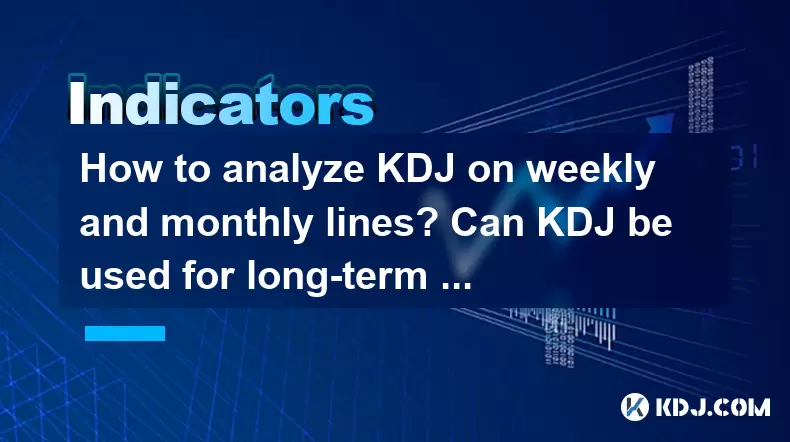
How to analyze KDJ on weekly and monthly lines? Can KDJ be used for long-term operations?
May 22,2025 at 02:21pm
Analyzing the KDJ indicator on weekly and monthly lines is a valuable skill for traders interested in long-term cryptocurrency operations. The KDJ, also known as the Stochastic Oscillator, is a momentum indicator that compares a closing price of a cryptocurrency to its price range over a certain period. By applying the KDJ to weekly and monthly timefram...
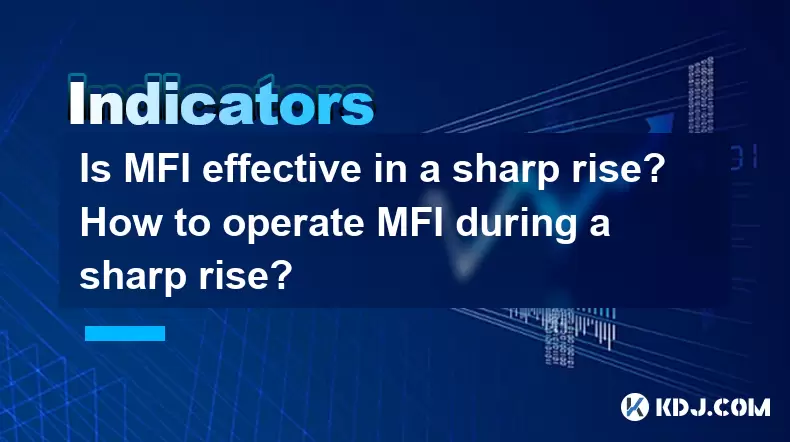
Is MFI effective in a sharp rise? How to operate MFI during a sharp rise?
May 22,2025 at 02:07pm
Is MFI effective in a sharp rise? How to operate MFI during a sharp rise? The Money Flow Index (MFI) is a popular technical indicator used by traders to gauge the strength of money flowing in and out of a security. It is particularly useful in identifying overbought and oversold conditions in the market. In this article, we will explore the effectivenes...
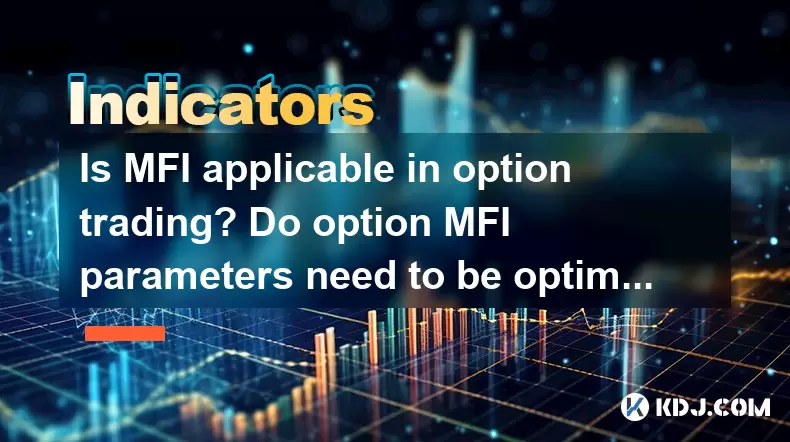
Is MFI applicable in option trading? Do option MFI parameters need to be optimized?
May 22,2025 at 02:15pm
The Money Flow Index (MFI) is a popular technical indicator used by traders to gauge the strength of money flowing in and out of a security. While the MFI is commonly applied to stocks and other financial instruments, its applicability in option trading is a topic of interest for many traders. In this article, we will explore whether MFI can be effectiv...
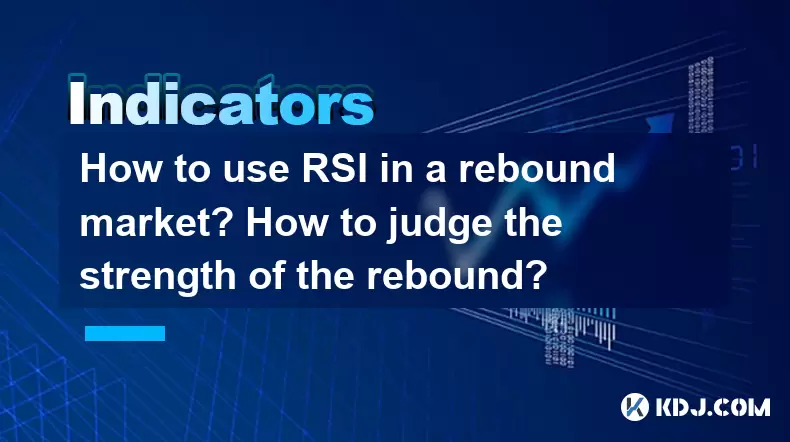
How to use RSI in a rebound market? How to judge the strength of the rebound?
May 22,2025 at 08:07am
The Relative Strength Index (RSI) is a momentum oscillator that measures the speed and change of price movements. It is widely used in the cryptocurrency market to identify overbought or oversold conditions, which can be particularly useful in a rebound market. In this article, we will explore how to effectively use the RSI in a rebound market and how t...
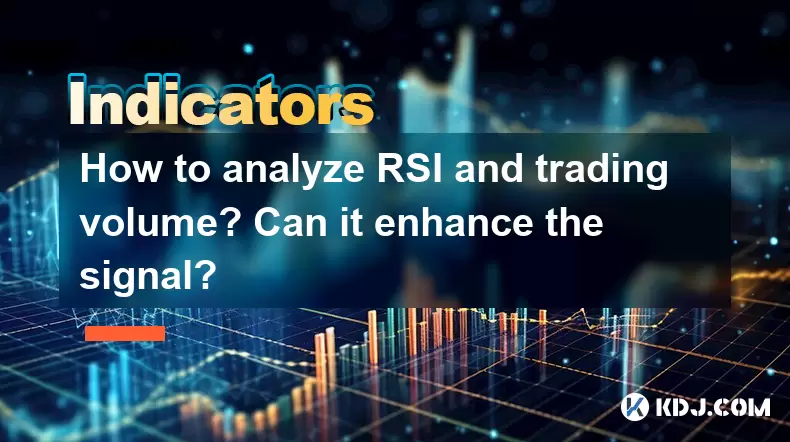
How to analyze RSI and trading volume? Can it enhance the signal?
May 22,2025 at 01:14pm
Understanding how to analyze the Relative Strength Index (RSI) and trading volume can significantly enhance your trading signals within the cryptocurrency market. RSI is a momentum oscillator that measures the speed and change of price movements, while trading volume indicates the total number of shares or contracts traded within a specified time frame....
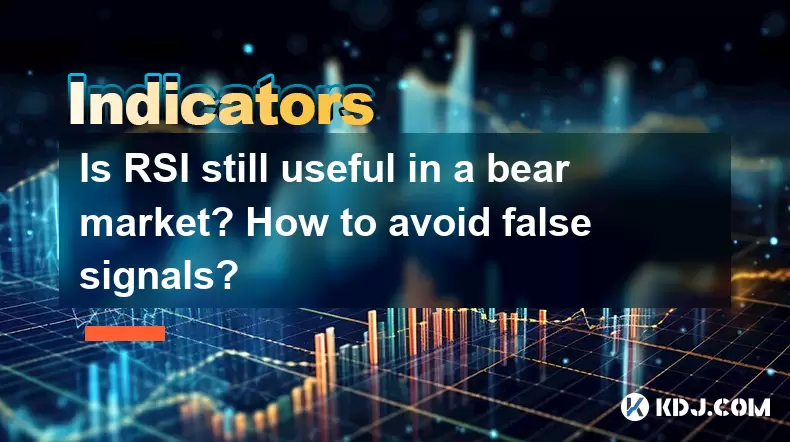
Is RSI still useful in a bear market? How to avoid false signals?
May 22,2025 at 11:21am
The Relative Strength Index (RSI) is a popular momentum oscillator used by traders to gauge the speed and change of price movements. While it's widely used in bullish markets, many traders question its effectiveness during bear markets. In this article, we will explore whether the RSI remains useful in bear markets and provide strategies to avoid false ...

How to analyze KDJ on weekly and monthly lines? Can KDJ be used for long-term operations?
May 22,2025 at 02:21pm
Analyzing the KDJ indicator on weekly and monthly lines is a valuable skill for traders interested in long-term cryptocurrency operations. The KDJ, also known as the Stochastic Oscillator, is a momentum indicator that compares a closing price of a cryptocurrency to its price range over a certain period. By applying the KDJ to weekly and monthly timefram...

Is MFI effective in a sharp rise? How to operate MFI during a sharp rise?
May 22,2025 at 02:07pm
Is MFI effective in a sharp rise? How to operate MFI during a sharp rise? The Money Flow Index (MFI) is a popular technical indicator used by traders to gauge the strength of money flowing in and out of a security. It is particularly useful in identifying overbought and oversold conditions in the market. In this article, we will explore the effectivenes...

Is MFI applicable in option trading? Do option MFI parameters need to be optimized?
May 22,2025 at 02:15pm
The Money Flow Index (MFI) is a popular technical indicator used by traders to gauge the strength of money flowing in and out of a security. While the MFI is commonly applied to stocks and other financial instruments, its applicability in option trading is a topic of interest for many traders. In this article, we will explore whether MFI can be effectiv...

How to use RSI in a rebound market? How to judge the strength of the rebound?
May 22,2025 at 08:07am
The Relative Strength Index (RSI) is a momentum oscillator that measures the speed and change of price movements. It is widely used in the cryptocurrency market to identify overbought or oversold conditions, which can be particularly useful in a rebound market. In this article, we will explore how to effectively use the RSI in a rebound market and how t...

How to analyze RSI and trading volume? Can it enhance the signal?
May 22,2025 at 01:14pm
Understanding how to analyze the Relative Strength Index (RSI) and trading volume can significantly enhance your trading signals within the cryptocurrency market. RSI is a momentum oscillator that measures the speed and change of price movements, while trading volume indicates the total number of shares or contracts traded within a specified time frame....

Is RSI still useful in a bear market? How to avoid false signals?
May 22,2025 at 11:21am
The Relative Strength Index (RSI) is a popular momentum oscillator used by traders to gauge the speed and change of price movements. While it's widely used in bullish markets, many traders question its effectiveness during bear markets. In this article, we will explore whether the RSI remains useful in bear markets and provide strategies to avoid false ...
See all articles
























